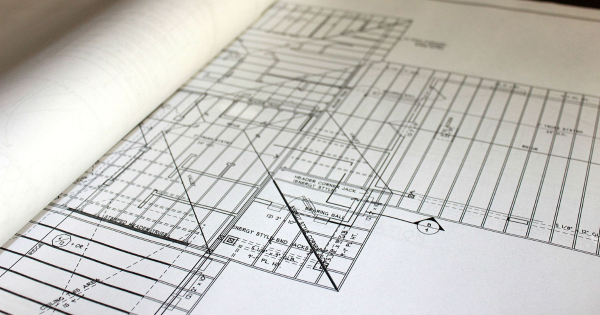It can be incredibly difficult to get involved in the food and beverage industry. Food and beverages are obviously consumed by customers, which means that they need to be safe to eat and drink, with zero contamination. If a single order of products were somehow contaminated, this could result in thousands of people becoming ill. Therefore, those starting or expanding a business within these industries need to be prepared to have strict standards when selecting or building a food processing plant. Fortunately, the industrial flooring solutions industry, and indeed the industrial construction industry in general, are prepared to meet these standards. There are benefits to contracting or buying an existing plant. However, there are also a lot of advantages to building a plant that is specifically meant to serve your needs. Furthermore, there are plenty of options that can serve you within the construction industry; 2017 saw 8.4 million people working within the American construction industry. With that being said, let’s look into what you should seek when choosing or building a plant.
1. Correct Flooring
Industrial flooring solutions are what you should look for first when building a food processing plant. After all, you will be working from the ground up. You need to make sure that the type of flooring you choose is completely smooth, without any existing cracks or a tendency to develop cracks early. The issue with cracks within food processing plants, any expert in industrial flooring solutions can tell you, is that bacteria can get caught up in these spaces and slowly develop out of control. The flooring also needs to be easy to clean and maintain. It should be treated with anti-corrosion material. Food processing plants must be cleaned with strong chemicals, which means that they may wear down faster than usual if they aren’t properly treated or constructed from the right materials.
2. Floor Drainage Systems
In the same sense, it’s impossible to consult with industrial flooring solutions experts in order to make sure that you also have a drainage system set up. It’s much easier to keep floors clean when they’re outfitted with drainage systems through which the excess waste can more easily be dealt with. You don’t need to rely on typical grates to drain the floors. Grate-free drainage systems are now readily available and help food processing plants resist both bacteria and odor. Some are even self-cleaning!
3. Sanitation Areas
There are even more options available to help you keep your food processing plant as clean as possible. A sanitation area is extremely necessary, even more so than a floor drainage system. People always bring outside germs and dirt into food processing plants; or, they will if they don’t use a sanitation area. Typically, sanitation areas should include a sink, lockers, and a changing area wherein employees can put on their uniforms. These uniforms should include sanitary outfits and materials like hairnets and gloves. Essentially, the sanitation area is a separate station in which employees can prepare before getting to work.
4. Good Equipment
The type of equipment that your food processing plant needs will of course depend on the types of products that are being made. But that equipment, no matter what it is, also needs to be of the highest quality possible. It needs to be clean, reliable, and in great working order. Stainless steel equipment is bacteria-resistant, and some types of equipment actually can be cleaned as they work throughout the day.
5. Extra Cleaning Stations
While there needs to be an area in which employees clean before working, there also need to be stations in which they can wash their hands, hose down and clean equipment, and clean in general as they work. This will ensure that products are kept clean and safe and that processes are more efficient at the end of the day.
Building a food processing plant is complicated at first glance. But in the end, there are clear guidelines to follow throughout, which will keep you on track and ultimately provide you with what you need.


 Pamela began her professional career in the broadcast industry while attending Tarleton State University. After graduating with a B.S. in Speech Communication in 1997, she worked at several radio stations in management roles focusing on continuity, music and production as well as serving as an on-air talent continuously for more than ten years. In 2010, Pamela accepted a position as the Assistant Marketing and Development Director for the Eisemann Center in Richardson, TX. Helping to promote, market and develop the City of Richardson’s performing arts center, she succeeded in implementing and managing all social media marketing as well as creating and directing a first-ever student art exhibit, further strengthening her marketing and organizational talents.
Pamela began her professional career in the broadcast industry while attending Tarleton State University. After graduating with a B.S. in Speech Communication in 1997, she worked at several radio stations in management roles focusing on continuity, music and production as well as serving as an on-air talent continuously for more than ten years. In 2010, Pamela accepted a position as the Assistant Marketing and Development Director for the Eisemann Center in Richardson, TX. Helping to promote, market and develop the City of Richardson’s performing arts center, she succeeded in implementing and managing all social media marketing as well as creating and directing a first-ever student art exhibit, further strengthening her marketing and organizational talents. Jason Krueger is the Director of Ranch and Real Estate Development for The Project Group Consulting, LLC. Jason has been managing and developing ranches for greater than 14 years, and has extensive sales management experience in the construction industry dating back to the late 90s. He is also a Wildlife Biologist/Ecologist with a B.S. in Wildlife Ecology from Texas A&M University in College Station.
Jason Krueger is the Director of Ranch and Real Estate Development for The Project Group Consulting, LLC. Jason has been managing and developing ranches for greater than 14 years, and has extensive sales management experience in the construction industry dating back to the late 90s. He is also a Wildlife Biologist/Ecologist with a B.S. in Wildlife Ecology from Texas A&M University in College Station. Bryant began his career at Crepaco warehouse in parts distribution and pump assembly. Then he progressed to field installation for process and ammonia systems where he oversaw welding and fitting both sanitary tubing and ammonia piping systems.He then moved to San Antonio, spent a year as a contract fabricator with H-E-B Foods working for Sanitary Welding Services. At the end of his contract he returned to the DFW area with Alloy Equipment doing installation, crew management, and scheduling. There he remained through the buyout by Statco Fabrication and Engineering, which resulted in his 25 combined years with them moving into engineering and sales departments.
Bryant began his career at Crepaco warehouse in parts distribution and pump assembly. Then he progressed to field installation for process and ammonia systems where he oversaw welding and fitting both sanitary tubing and ammonia piping systems.He then moved to San Antonio, spent a year as a contract fabricator with H-E-B Foods working for Sanitary Welding Services. At the end of his contract he returned to the DFW area with Alloy Equipment doing installation, crew management, and scheduling. There he remained through the buyout by Statco Fabrication and Engineering, which resulted in his 25 combined years with them moving into engineering and sales departments. With more than 25 years in the food and beverage industry and extensive experience as a project manager, Tony has planned and led multi-million dollar projects relating to system upgrades, equipment installation, water quality, validations and process improvements. Some of his areas of expertise include project planning, quality assurance, process analysis, manufacturing systems, process design and problem resolution.
With more than 25 years in the food and beverage industry and extensive experience as a project manager, Tony has planned and led multi-million dollar projects relating to system upgrades, equipment installation, water quality, validations and process improvements. Some of his areas of expertise include project planning, quality assurance, process analysis, manufacturing systems, process design and problem resolution. Tim is an electrical and control systems engineer with more than ten years of experience in a wide variety of industries. Project experience includes working with clients in the water/wastewater fields, pharmaceutical, cosmetics and food and beverage industries. Prior to his engineering work, Tim was a licensed water treatment plant operator in Texas. Tim’s strengths are process engineering, control system design, conveyor system design, and project management. He received his B. S. in Electrical Engineering from the University of Texas at Arlington. In his spare time, Tim enjoys working on cars, golfing, and billiards.
Tim is an electrical and control systems engineer with more than ten years of experience in a wide variety of industries. Project experience includes working with clients in the water/wastewater fields, pharmaceutical, cosmetics and food and beverage industries. Prior to his engineering work, Tim was a licensed water treatment plant operator in Texas. Tim’s strengths are process engineering, control system design, conveyor system design, and project management. He received his B. S. in Electrical Engineering from the University of Texas at Arlington. In his spare time, Tim enjoys working on cars, golfing, and billiards. Michael has thirty-five years of diversified experience in project management and engineering, equipment and systems design, and manufacturing and production. Michael holds a Bachelor of Science degree in Mechanical Engineering from Texas A&M University.
Michael has thirty-five years of diversified experience in project management and engineering, equipment and systems design, and manufacturing and production. Michael holds a Bachelor of Science degree in Mechanical Engineering from Texas A&M University.